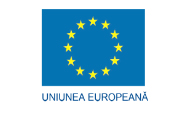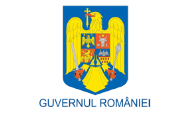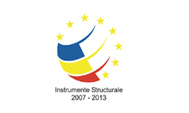|
76NEWS on 2014-02-25 04:23:29Project Endedby marina |
|
|
|
|
|
Welcome !
|
  
|
You are visitor no. 48171 since 10/14/2010 Visitors Online: 1 Members Online: 0
Page updated:
|
CYBERDYN
Cyberinfrastructure for Geodynamic Studies Related to the Vrancea Seismogenic Zone
| SPECIFIC OBJECTIVES
Objective #1: With the help of the HPCC system, we will construct a series of 3D high-resolution geodynamic models based on various tectonic evolution scenarios (i.e. trench rollback subduction, unstable triple junction). 3D high-resolution models will be visualized using the HPVC and GeoWall systems. We will conduct a critical examination of what robust constraints can be placed on our models. We will augment the input parameter data set with new field measurements from the geodynamic network infrastructure.
The above mentioned process will always start by constructing structural-tectonic models by the help of complex interpretation of the geological and geophysical information previously obtained or gathered during the project. To this aim, two main approaches will be used:
-designing and achieving complex computer databases for previously obtained geological, geophysical and geodesy information
-acquiring new data during several field campaigns or using observatory records.
The Institute of Geodynamics of the Romanian Academy has developed a specific research infrastructure at both local (the geodynamic polygon Tulnici-Valea Sarii - Vrancioaia located in the epicenter area) and regional scale (the national geodynamic network) to monitor lithosphere dynamics in the bending area of East Carpathians. Crust deformation and non-tidal gravity change as echoes of the deep Earth processes will be observed and used as constraints for the synthetic models produced by the newly achieved HPCC. The eventual connections between horizontal displacements of the Peceneraga - Camena Fault compartments and seismic activity within Vrancea zone will be also monitored by the help of the Baspunar geodynamic observatory.
Objective #2: Evaluate relationships between input parameters and modeling outputs (i.e. temperature field, flow field, stress distribution, surface deformation), particularly in light of our working hypothesis. We will focus on the effects of rheology and plate reconstruction parameters that exert first order controls on the tectonic evolution.
Objective #3: Explore the implications of our numerical models for the structure and evolution of the Vrancea seismic zone. We will explore the implications of our models for the stress field distribution and evolution. Also, we will investigate the relationship between our modeling results and time-space evolution of volcanism in East Carpathians.
Validation of the achieved models will be done through the field observations on the IGAR infrastructure.
|
|
|
|
|
|
|
|





